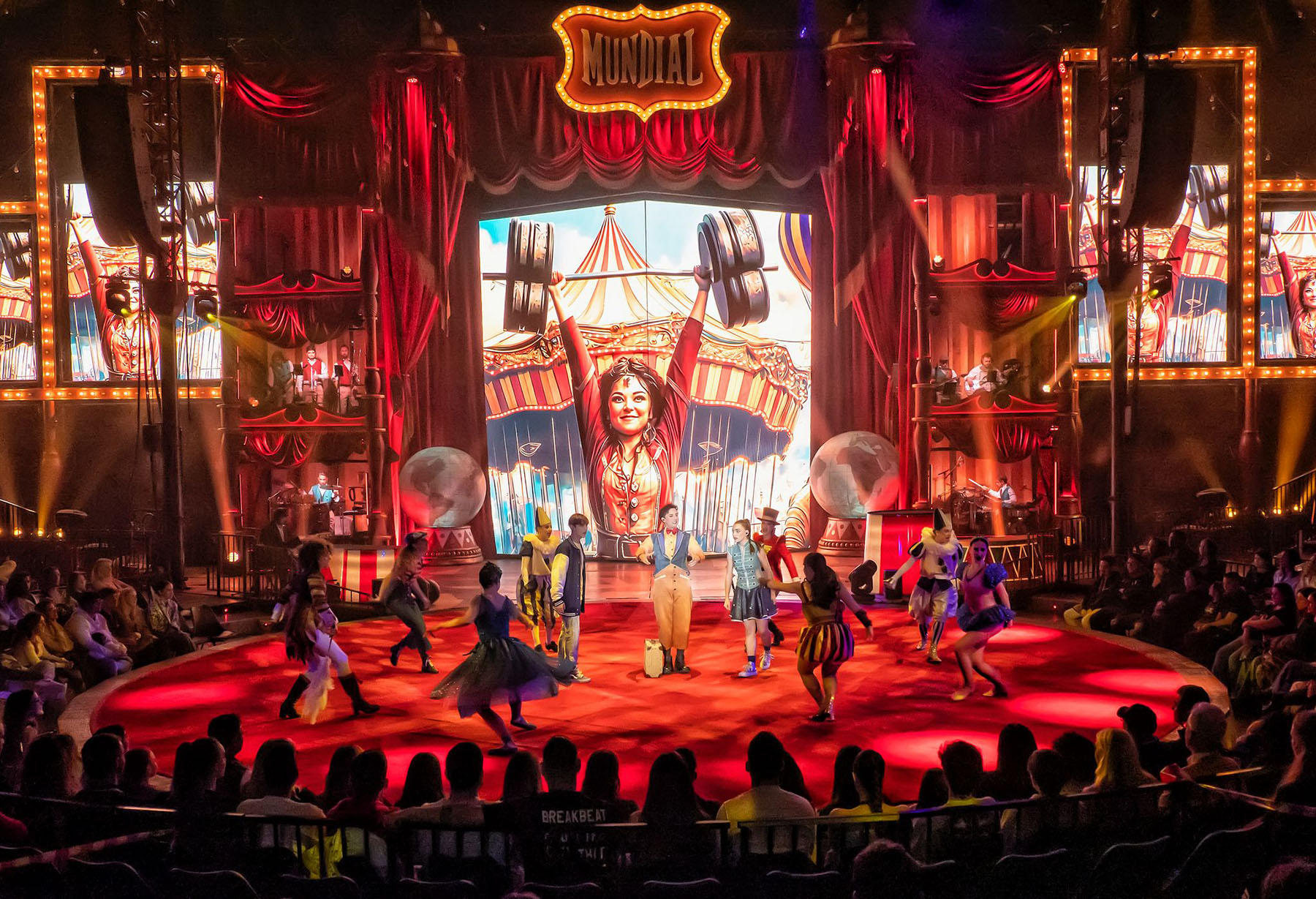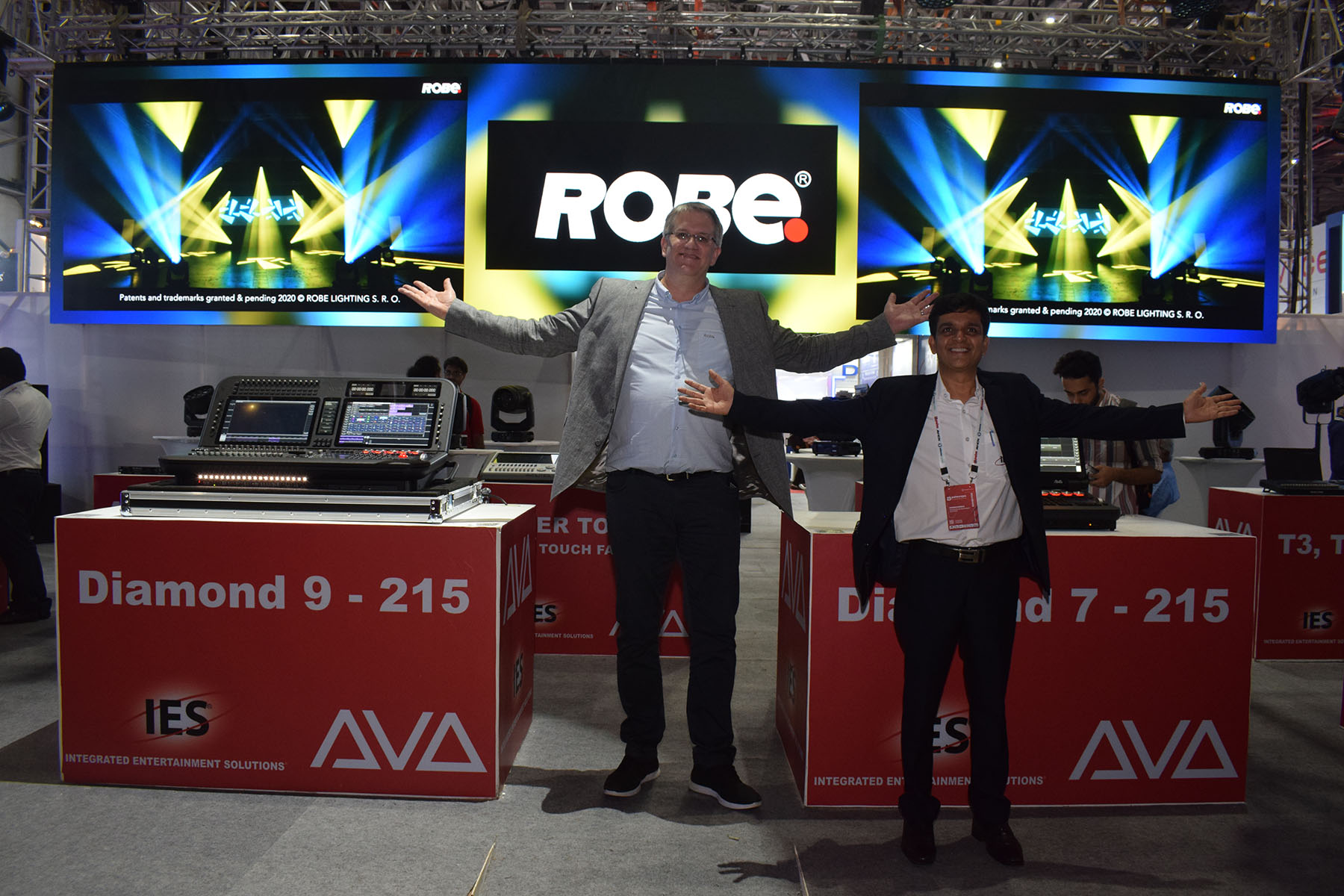The Lovell radio telescope, the third largest steerable radio telescope in the world, was adjacent to the 12-meter orbit stage at the event, co-promoted by Ear To the Ground, Kendall Calling and The Warehouse Project, and the revolving telescope dish was positioned for maximum effect from the video projections coordinated by Pod Blumen of Bluman Associations.
“It was a fantastic opportunity to work in a very special place overlooked by one of the most amazing scientific instruments in the world,” said Nick Walton, project manager for Manchester-based dbn. “Everything went smoothly and it was a massive success all round. We hope this will be the first of more events here.”
 dbn’s brief was to provide stage lighting for all the bands – accommodating the Flaming Lips spec from LD Ian Turner, who is also the LD for British Sea Power. Although not actually stipulated, Walton and dbn made the decision to also light the framework, legs and pivotal elements of the Dish – a mass of criss-crossing white-painted steelwork, which proved well-suited for illumination. “It was an opportunity not to be missed that took the concept of truss toning into another spatial dimension,” enthused Walton. “As well as being a functional working tool, it is a stunning piece of architecture, and I really loved doing it.”
dbn’s brief was to provide stage lighting for all the bands – accommodating the Flaming Lips spec from LD Ian Turner, who is also the LD for British Sea Power. Although not actually stipulated, Walton and dbn made the decision to also light the framework, legs and pivotal elements of the Dish – a mass of criss-crossing white-painted steelwork, which proved well-suited for illumination. “It was an opportunity not to be missed that took the concept of truss toning into another spatial dimension,” enthused Walton. “As well as being a functional working tool, it is a stunning piece of architecture, and I really loved doing it.”
Around the perimeter of the dish, which served as the projection surface for six Christie 20K projectors provided by Bluman Associates, Walton positioned a selection of Studio Due City Color wash lights – a mix of 1.8 and 2.5Ks, plus a quantity of i-Pix BB4 and BB7 LED wash fixtures.
 Walton chose the gear for its ability to provide a rich, deep light quality from LED sources, working together with the arc lights. Two high-powered Flower effects were located the other side of the dish and blasted through the framework towards the crowds for the finale.
Walton chose the gear for its ability to provide a rich, deep light quality from LED sources, working together with the arc lights. Two high-powered Flower effects were located the other side of the dish and blasted through the framework towards the crowds for the finale.
The stage lighting was more conventional. dbn sub-hung two main trusses, which were jointed using custom hinges that angle the metalwork efficiently around the orbit’s roof space, maximizing the 8 meters trim height. They also flew a one-meter truss piece for the Flaming Lips’ mirror ball.
dbn also provided 10 Clay Paky Alpha Spot 1200 HPEs, eight Alpha Spot 700 HPEs and 16 Alpha Wash 700s on the two main trusses and, on the deck, four Robe Robin 600 LEDWashes for low level coverage and two i-Pix BB16s for cross stage washes.
 dbn also supplied 10 Martin Professional Atomic strobes for the “production” lighting rig, and, for audience illumination, a collection of 2-lites and 4-lites hung on the front side of the first truss, supplemented with additional gear from the Flaming Lips’ floor package.
dbn also supplied 10 Martin Professional Atomic strobes for the “production” lighting rig, and, for audience illumination, a collection of 2-lites and 4-lites hung on the front side of the first truss, supplemented with additional gear from the Flaming Lips’ floor package.
The setup also included a 6.5 meter high arch of Stealth LED screen, framed with Sunstrips, which had to be moved on and offstage, plus extra strobes, Chroma-Q DB4s, and four smoke machines – which worked together with four from dbn – and a multi-colored laser.
Ian Turner also brought in his own Chamsys MagicQ console to run the Flaming Lips show, while dbn’s Avolites Pearl Expert was used to run all the other bands’ lighting and the dish lights.
 Nick Walton worked with a crew of four for the load-in and out: Nick Buckley, Andy Kennett, Colm Whaley and Moss Everhard. They set up on the Friday morning ready for a Saturday show, leaving a night free for programming.
Nick Walton worked with a crew of four for the load-in and out: Nick Buckley, Andy Kennett, Colm Whaley and Moss Everhard. They set up on the Friday morning ready for a Saturday show, leaving a night free for programming.
The production encountered a few challenges, the main one being the fact that it was a cell-phone-free environment while the dish was in operation during the build.
Along with the bands, the crowds got the chance to listen to Dr. Tim O’Brien, Reader in Astrophysics from the Jodrell Bank Centre for Astrophysics, who relayed a few facts about the iconic Lovell telescope, in use since 1957.
Dr. O’Brien also used audio samples of various rhythmic sounds made by pulsars, quasars, masers, meteors and gravitational lenses and other astrological phenomena as they spin through the universe millions of miles in outer space.
For more information, please visit www.dbn.co.uk.



